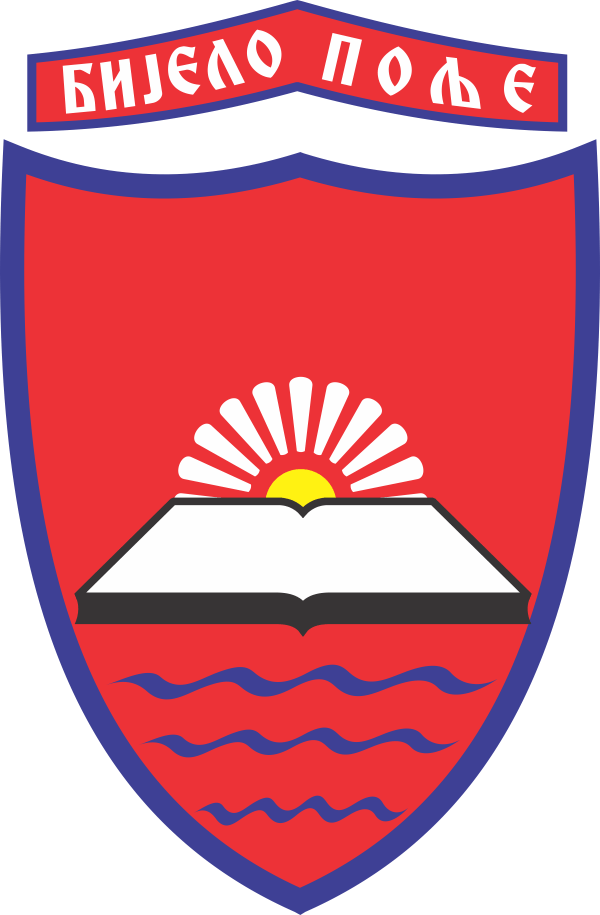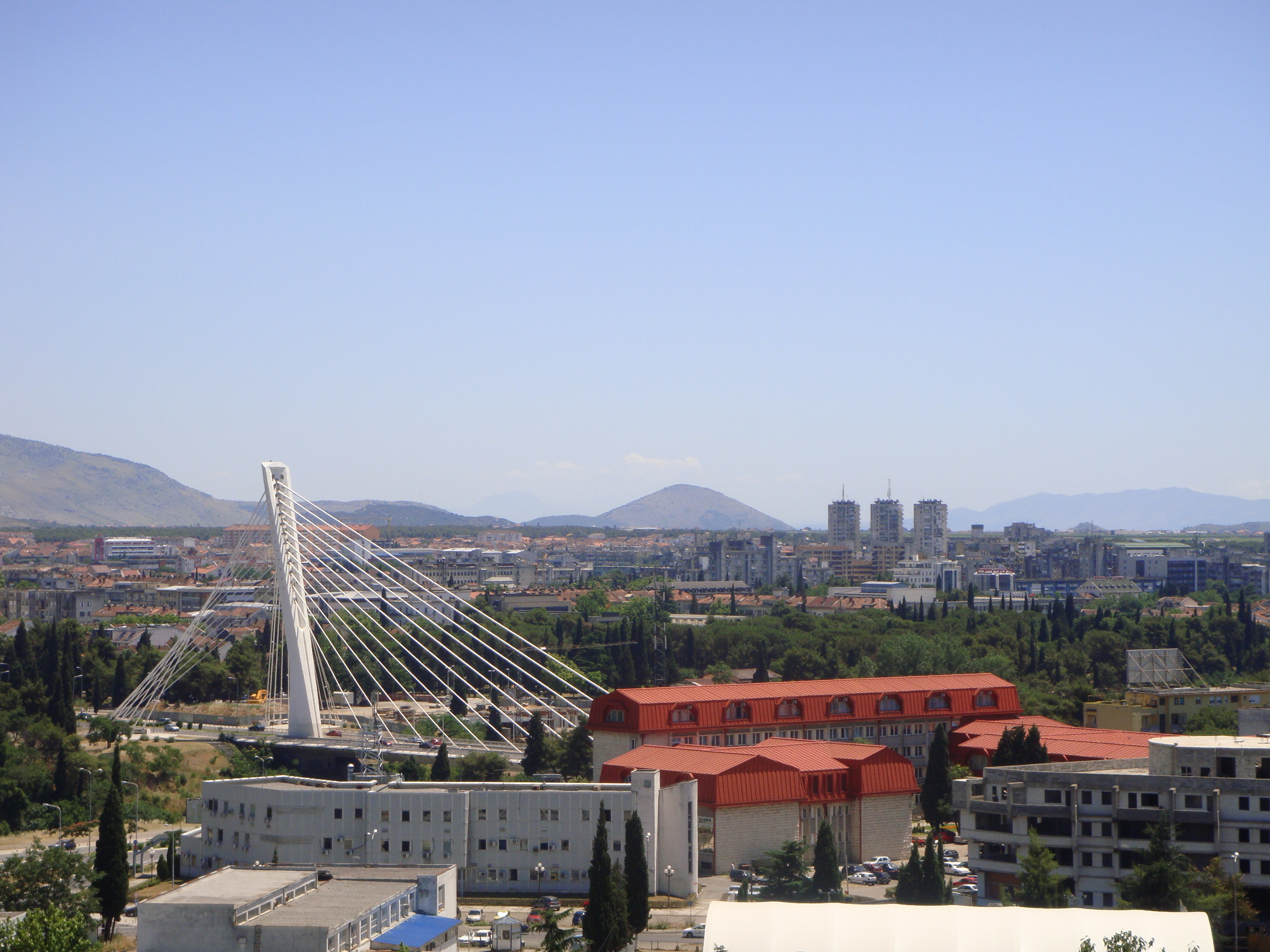|
Bijelo Polje
Bijelo Polje ( cnr, Бијело Поље, ) is a town in northeastern Montenegro on the Lim River. It has an urban population of 15,400 (2011 census). It is the administrative, economic, cultural and educational centre of northern Montenegro. Bijelo Polje is the center of Bijelo Polje Municipality (population of 46,051). It is the unofficial center of the north-eastern region of Montenegro. Bijelo Polje means 'white field' in Serbo-Croatian. History Bijelo Polje's Saint Peter and Paul Church is the place where the UNESCO Miroslav's Gospel of Miroslav, brother of Serbian ruler Stefan Nemanja was written. During World War II, Bijelo Pole was a prominent location for the anti-fascist resistance movement in Yugoslavia, Montenegro in particular. Population Bijelo Polje is the administrative centre of the Bijelo Polje municipality, which in 2011 had a population of 46,251. The town of Bijelo Polje itself has 15,400 citizens. Population of Bijelo Polje (town): *1981 - 11,927 *199 ... [...More Info...] [...Related Items...] OR: [Wikipedia] [Google] [Baidu] |
List Of Cities In Montenegro
This is a list of cities and towns with over 10,000 inhabitants (or lower if the municipality has over 20,000 inhabitants) in Montenegro. For the full list of populated places, see List of populated places in Montenegro. List For a list of municipalities, see Municipalities of Montenegro; for a category, see :Populated places in Montenegro; for a list of all places in Montenegro, see List of places in Montenegro. List of towns with over 10,000 inhabitants or lower if the municipality has over 20,000 inhabitants: See also * Municipalities of Montenegro * Regions of Montenegro * Populated places of Montenegro * Subdivisions of Montenegro References External links {{DEFAULTSORT:Cities In Montenegro Montenegro geography-related lists Montenegro ) , image_map = Europe-Montenegro.svg , map_caption = , image_map2 = , capital = Podgorica , coordinates = , largest_city = capital , ... [...More Info...] [...Related Items...] OR: [Wikipedia] [Google] [Baidu] |
Ćamil Sijarić
Ćamil Sijarić (18 December 1913 – 6 December 1989) was a Yugoslavian novelist and short story writer. He enrolled in law school in 1936 and earned his degree four years later. Sijarić died in a car crash at the age of 75. Life He was born in Šipovice, near Bijelo Polje, in the Kingdom of Montenegro, to Muslim parents. He was of Albanian origin on his mothers side, and he considered Albanian to be native to him. Both of his parents died while he was a child. He was raised thereafter by his aunts and uncles. Sijarić enrolled in the University of Belgrade's Law School and earned his degree in 1940. He was both a member of Montenegrin Academy of Sciences and Arts, and Academy of Arts and Sciencies of Bosnia and Herzegovina. His first literary work was ''Ram-Bulja'' (1953), which he first wrote in Albanian but then later translated and first it in published Serbian. It was thereafter re-translated into Albanian shortly after because, according to Sijarić, the character ... [...More Info...] [...Related Items...] OR: [Wikipedia] [Google] [Baidu] |
Avdo Međedović
Avdo Međedović ( – 1955) was a ''guslar'' (gusle player and oral poet) from Sandžak, modern-day Montenegro. He was the most versatile and skillful performer of all those encountered by Milman Parry and Albert Lord during their research on the oral epic tradition of Bosnia and Herzegovina and Montenegro in the 1930s. At Parry's request, Avdo sang songs he already knew and some songs he heard in front of Parry, convincing him that someone Homer-like could produce a poem so long. Avdo dictated, over five days, a version of the well-known theme ''The Wedding of Meho Smailagić'' that was 12,323 lines long, saying on the fifth day to Nikola (Parry's assistant on the journey) that he knew even longer songs. On another occasion, he sang over several days an epic of 13,331 lines. He said he had several others of similar length in his repertoire. In Parry's first tour, over 80,000 lines were transcribed. Many years afterward ''The Wedding'' was published in 1974 by Lord with a paralle ... [...More Info...] [...Related Items...] OR: [Wikipedia] [Google] [Baidu] |
Yugoslavs
Yugoslavs or Yugoslavians ( Bosnian and Croatian: ''Jugoslaveni'', Serbian and Macedonian ''Jugosloveni''/Југословени; sl, Jugoslovani) is an identity that was originally designed to refer to a united South Slavic people. It has been used in two connotations, the first in a sense of common shared ethnic descent, i.e. panethnic or supraethnic connotation for ethnic South Slavs, and the second as a term for all citizens of former Yugoslavia regardless of ethnicity. Cultural and political advocates of Yugoslav identity have historically ascribed the identity to be applicable to all people of South Slav heritage, including those of modern Bosnia and Herzegovina, Croatia, Montenegro, North Macedonia, Serbia, and Slovenia. Although Bulgarians are a South Slavic group, attempts at uniting Bulgaria into Yugoslavia were unsuccessful, and therefore Bulgarians were not included in the panethnic identification. Since the dissolution of Yugoslavia and the establishment of Sout ... [...More Info...] [...Related Items...] OR: [Wikipedia] [Google] [Baidu] |
Croats
The Croats (; hr, Hrvati ) are a South Slavic ethnic group who share a common Croatian ancestry, culture, history and language. They are also a recognized minority in a number of neighboring countries, namely Austria, the Czech Republic, Germany, Hungary, Italy, Montenegro, Romania, Serbia, Slovakia and Slovenia. Due to political, social and economic reasons, many Croats migrated to North and South America as well as New Zealand and later Australia, establishing a diaspora in the aftermath of World War II, with grassroots assistance from earlier communities and the Roman Catholic Church. In Croatia (the nation state), 3.9 million people identify themselves as Croats, and constitute about 90.4% of the population. Another 553,000 live in Bosnia and Herzegovina, where they are one of the three constituent ethnic groups, predominantly living in Western Herzegovina, Central Bosnia and Bosnian Posavina. The minority in Serbia number about 70,000, mostly in Voj ... [...More Info...] [...Related Items...] OR: [Wikipedia] [Google] [Baidu] |
Albanians
The Albanians (; sq, Shqiptarët ) are an ethnic group An ethnic group or an ethnicity is a grouping of people who identify with each other on the basis of shared attributes that distinguish them from other groups. Those attributes can include common sets of traditions, ancestry, language, history, ... and nation native to the Balkan Peninsula who share a common Albanian Cultural heritage, ancestry, Albanian culture, culture, Albanian history, history and Albanian language, language. They primarily live in Albania, Kosovo, North Macedonia, Montenegro, Serbia as well as in Croatia, Greece, Italy and Turkey. They also constitute a large diaspora with several communities established across Europe, the Americas and Oceania. Albanians have Paleo-Balkan languages, Paleo-Balkanic Origin of the Albanians, origins. Exclusively attributing these origins to the Illyrians, Thracians or other Paleo-Balkan people is still a matter of debate among historians and ethnologists. The firs ... [...More Info...] [...Related Items...] OR: [Wikipedia] [Google] [Baidu] |
Romani People
The Romani (also spelled Romany or Rromani , ), colloquially known as the Roma, are an Indo-Aryan ethnic group, traditionally nomadic itinerants. They live in Europe and Anatolia, and have diaspora populations located worldwide, with significant concentrations in the Americas. In the English language, the Romani people are widely known by the exonym Gypsies (or Gipsies), which is considered pejorative by many Romani people due to its connotations of illegality and irregularity as well as its historical use as a racial slur. For versions (some of which are cognates) of the word in many other languages (e.g., , , it, zingaro, , and ) this perception is either very small or non-existent. At the first World Romani Congress in 1971, its attendees unanimously voted to reject the use of all exonyms for the Romani people, including ''Gypsy'', due to their aforementioned negative and stereotypical connotations. Linguistic and genetic evidence suggests that the Roma origina ... [...More Info...] [...Related Items...] OR: [Wikipedia] [Google] [Baidu] |
Muslims (nationality)
Muslims ( Serbo-Croatian Latin and sl, Muslimani, Serbo-Croatian Cyrillic and mk, Муслимани) is a designation for a Serbo-Croatian speaking Muslims, inhabiting mostly the territory of the former Yugoslav republics. The term, adopted in 1971, designates Serbo-Croatian speaking Muslims, thus grouping together a number of distinct South Slavic communities of Islamic ethnocultural tradition. Prior to 1993, a vast majority of present-day Bosniaks self-identified as ethnic Muslims, along with some smaller groups of different ethnicity, such as Gorani and ''Torbeši''. This designation did not include Yugoslav non-Slavic Muslims, such as Albanians, Turks and Roma. After the breakup of Yugoslavia, a majority of Slavic Muslims of Bosnia and Herzegovina adopted the "Bosniak" ethnic designation in 1993, and they are today constitutionally recognized as one of three constituent peoples of Bosnia and Herzegovina. Approximately 100,000 people across the former Yugoslavia c ... [...More Info...] [...Related Items...] OR: [Wikipedia] [Google] [Baidu] |
Montenegrins
Montenegrins ( cnr, Црногорци, Crnogorci, or ; lit. "Black Mountain People") are a South Slavic ethnic group that share a common Montenegrin culture, history, and language, identified with the country of Montenegro. Genetics According to one triple analysis – autosomal, mitochondrial and paternal — of available data from large-scale studies on Balto-Slavs and their proximal populations, the whole genome SNP data situates Montenegrins with Serbs in between two Balkan clusters. According to a 2020 autosomal marker analysis, Montenegrins are situated in-between Serbians and Kosovo Albanians. Y-DNA genetic study done in 2010 on 404 male individuals from Montenegro gave the following results: haplogroup I2a (29.7%), E-V13 (26.9%), R1b (9.4%), R1a (7.6%), I1 (6.1%), J2a1 (4.7%), J2b (4.4%), G2a (2.4%), Q (1.9%), I2b (1.7%), N (1.4%), H (1.4%), L (1.2%), and J1 (0.49%). A 2022 study on 267 samples from northeastern Montenegro found that the "most common ... [...More Info...] [...Related Items...] OR: [Wikipedia] [Google] [Baidu] |
Bosniaks
The Bosniaks ( bs, Bošnjaci, Cyrillic: Бошњаци, ; , ) are a South Slavic ethnic group native to the Southeast European historical region of Bosnia, which is today part of Bosnia and Herzegovina, who share a common Bosnian ancestry, culture, history and language. They primarily live in Bosnia, Serbia, Montenegro, Croatia, Kosovo as well as in Austria, Germany, Turkey and Sweden. They also constitute a significant diaspora with several communities across Europe, the Americas and Oceania. Bosniaks are typically characterized by their historic ties to the Bosnian historical region, adherence to Islam since the 15th and 16th centuries, culture, and the Bosnian language. English speakers frequently refer to Bosniaks as Bosnian MuslimsThis term is considered inaccurate since not all Bosniaks profess Islam or practice the religion. Partly because of this, since the dissolution of Yugoslavia, ''Bosniak'' has replaced ''Muslim'' as an official ethnic term in part to ... [...More Info...] [...Related Items...] OR: [Wikipedia] [Google] [Baidu] |
Serbs
The Serbs ( sr-Cyr, Срби, Srbi, ) are the most numerous South Slavic ethnic group native to the Balkans in Southeastern Europe, who share a common Serbian ancestry, culture, history and language. The majority of Serbs live in their nation state of Serbia, as well as in Bosnia and Herzegovina, Croatia, Montenegro, and Kosovo. They also form significant minorities in North Macedonia and Slovenia. There is a large Serb diaspora in Western Europe, and outside Europe and there are significant communities in North America and Australia. The Serbs share many cultural traits with the rest of the peoples of Southeast Europe. They are predominantly Eastern Orthodox Christians by religion. The Serbian language (a standardized version of Serbo-Croatian) is official in Serbia, co-official in Kosovo and Bosnia and Herzegovina, and is spoken by the plurality in Montenegro. Ethnology The identity of Serbs is rooted in Eastern Orthodoxy and traditions. In the 19th century ... [...More Info...] [...Related Items...] OR: [Wikipedia] [Google] [Baidu] |


.png)